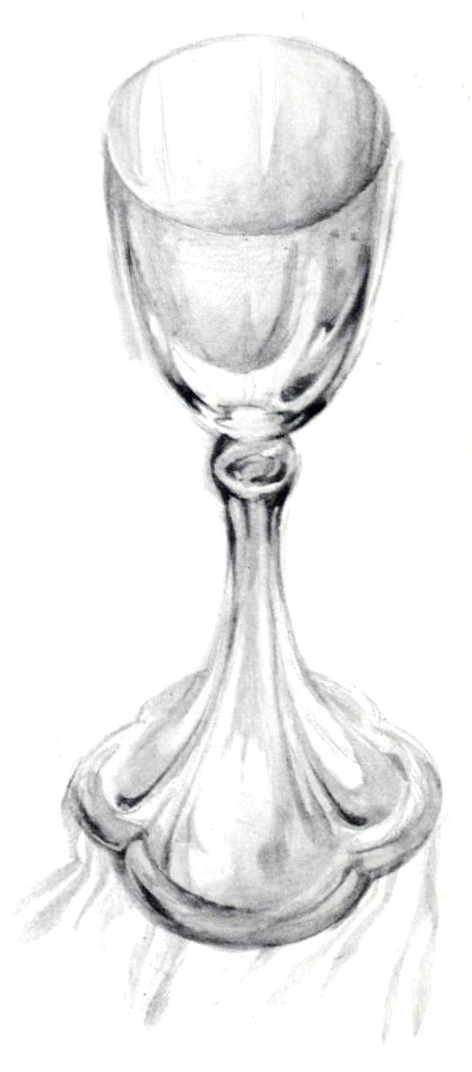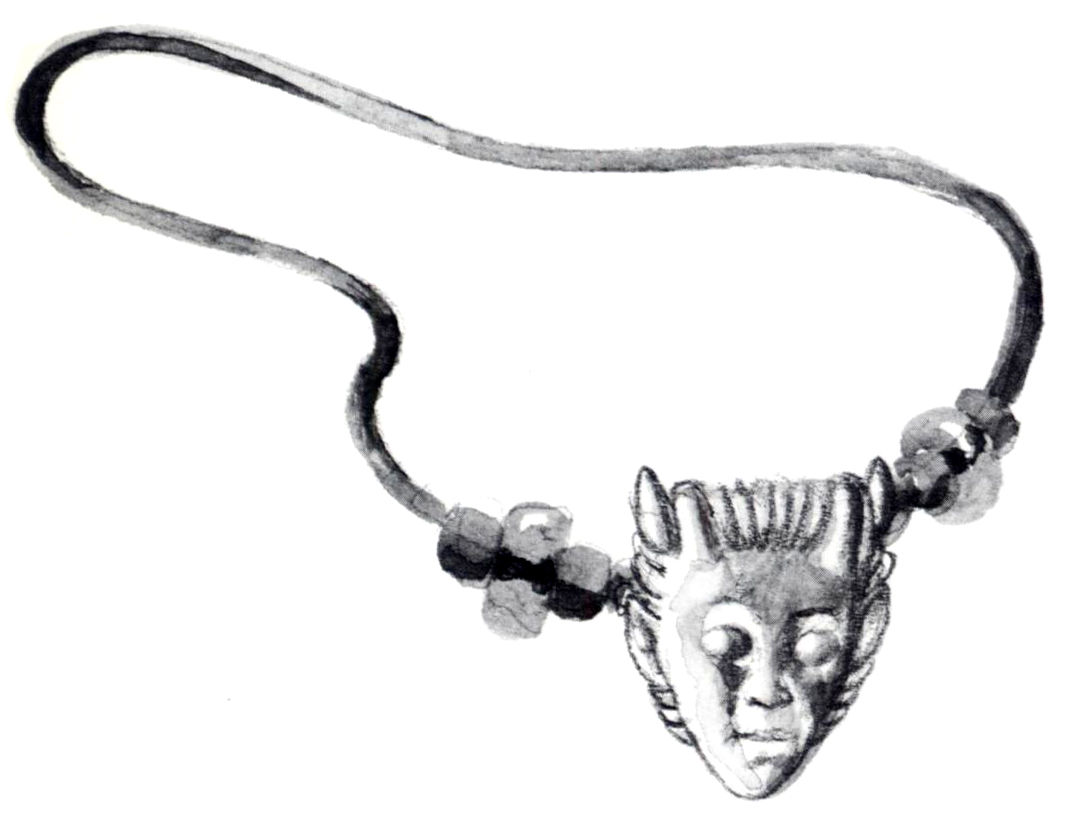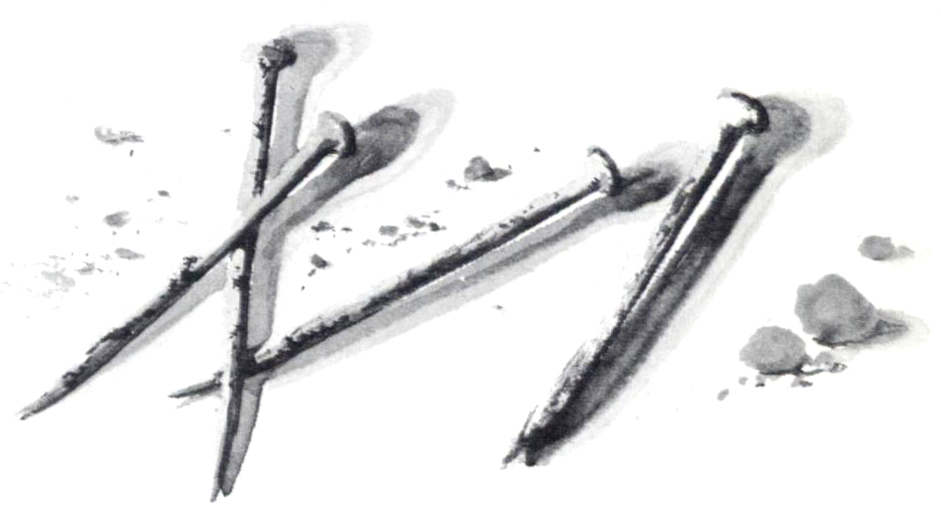
The Witch’s Equipment
One thing that all the witchcraft manuals seem to agree upon is that the witch’s equipment must be handmade and must be consecrated to the individual practicing witch. Equipment cannot generally be shared. Like an author’s typewriter or favorite pen, like an artist’s brushes or easel, the equipment comes, with time, to take on magical properties for the user. It seems to be filled with the user’s vibrations—so it sometimes seems that the witch’s equipment contains the magic within itself, just as an author’s typewriter seems to write by itself, or an artist’s brushes to make decisions independently of the artist.

Altar
The consecrated place (it may be a table or a bench, a tree stump or a rock) that holds the witch’s implements and is the mise en scène for magic (or Magick, as contemporary witches prefer to call it). Some witch traditions recommend that the altar be circular, and that it stand within a magic circle, drawn upon the ground.
Other witch traditions recommend that it contain a statue of the Mother Goddess, others that it shelter an image of the Horned God, others that it support both god and goddess to remind the worshiper of the universal powers these figures represent. White candles are often used on the altar, as well as a censer (or incense burner); often bowls of salt and water are added to represent the elements; always there is a consecrated drinking horn or chalice filled with wine.
Witch’s Wand
The magic wand so familiar to us from fairy tales may have tree worship at its root, for magical branches plucked from sacred trees in sacred groves figure in many mythologies. The most efficacious wand will be made of one of the woods sacred to the White Goddess: elderberry, willow, rowan, hazel, oak, or mistletoe. A straight and slender branch should be hollowed at the center (the pith removed), sanded to a silky smoothness, filled with cotton wool, and brought to life with three drops of the witch’s own blood, dripped on the cotton. Some traditions recommend that the wand be inscribed with a pentagram (a star with five points) as well as the witch’s ritual name—the name given to the witch upon her initiation. More important is that it be blessed in the name of the Mother Goddess and consecrated as a tool of the witch’s will. The stronger the witch’s will, the more invincible the wand.
Athame (or Athalme)

A black-handled, double-edged dagger with a magnetized blade. It represents the witch’s power and is used for many rituals. Clearly, it is a phallic symbol, and the act of plunging it into the Chalice represents the union of the male and female principles.
Bolline (or Biolline)
A white-handled knife used to make other magical objects or tools, or to incise letters or symbols on wood or wax. Both Bolline and Athame must be used only for rituals, never for paring cheese or carving roasts.
Cord (or Cingulam)

The magical binding cord that the witch wears around her waist and uses for symbolic binding rituals of all sorts. It is red, nine feet in length, and plaited. Natural materials such as cotton, silk, or wool are preferred.
Cauldron

An iron cauldron or kettle for preparing Sabbat feasts, magical brews, and potions. Sometimes the fire is kindled in the cauldron itself. The cauldron is such a staple of the lore about witches that we may find it surprising that some very powerful members of the craft of the witches use ordinary household pots—consecrated, of course.
Chalice (or Drinking Horn)

Container for sacrificial wine or water. In some witch traditions, the sacred marriage (sexual union between the incarnate god and the worshiper) is performed symbolically by plunging the Athame into the Chalice. The actual sacred marriage is probably more fun.
Witch’s Broom
For flying to the witches’ Sabbat or sweeping the house. Made of hawthorn, hazel, rowan, willow, broom, birch, or blackthorn twigs, and thus also a reminder of the tree worship of old. Most of the sacred woods recommended for the witch’s tools are also mentioned in the various Welsh minstrel poems on the legend of the Battle of the Trees, as Robert Graves shows in The White Goddess. All these trees have magical properties that can be traced back to the earliest religions. Margaret Murray says that the original broom was actually “a stalk of broom plant with a tuft of leaves at the end.” The broom plant has always been associated with “the giving and blasting of fertility” (according to Murray).
The European gypsy, and American rural black, custom of “jumping over the broom” to signify marriage probably derives from this connection between broom and fertility. But if we think poetically, isn’t it always the fantasy of oppressed people to turn the instrument of their oppression into the instrument of their liberation? The scraggly household broom, symbol of housewifery and toil, becomes, by a leap of imagination, the symbol of flight and fantasy.
It was also the custom of witches to leave ordinary brooms in their beds to fool their credulous husbands when they took off for the Sabbat. In the broom, then, we have a variety of contradictory symbols: drudgery and toil, fertility and marriage, and their opposite—absolute freedom to fly.
Her Broom or the Ride of the Witch
My broom
with its tuft of roses
beckoning at the black,
with its crown of thistles,
prickling the sky,
with its carved crescents
winking silverly
at Diana,
with its thick brush
of peacock feathers
sweeping the night,
with its triangle
of glinting fur.
I ride
over the roofs
of doom.
I ride
while he thinks me safe
in our bed.
My forehead
he thinks that scraggly
other broom,
my hips that staff,
my sex that stump
of blackthorn
& of twine.

Ah, I will ride
over the skies—
orange as apricots
slashed red
with pomegranate clouds—
He will think me
safe in our bed.
He will think I fear
such fabulous
flight.
It is his bed I fear!
I will burn the clouds
with my marvelous broom.
I will catch Persephone’s seeds
on my flaming tongue.
Ah—if I burn for this,
how beautiful my ashes—
& how beautiful,
my beautiful, comet-tailed
broom!
Witch Necklaces

Various grimoires, or witches’ books of spells, make mention of necklaces with magical properties. Some are quite simple, composed of seashells, acorns, seeds, and wood. Others are made of ordinary blue glass beads (of the sort worn even today throughout the Middle East as protection against the Evil Eye), and others contain crescent moons, which are symbols of Diana, the goddess most often associated with the witch cult by Margaret Murray and others. Many feminist witches call themselves “dianic” because of Murray’s use of the term “dianic cult” to refer to those who practiced witchcraft in Europe. Her theory that the witch cult was the lingering vestige of the ancient veneration of Diana was immensely influential for almost fifty years.
Book of Shadows

This is the book the witch keeps to record all that she has learned of witchcraft. Spells, incantations, rituals, and recipes are recorded within. It is best that the book itself (like all the other tools of the craft) be made by the witch. The materials might be leather or cloth for covers, handmade paper or parchment for pages. Tradition dictates that the book be destroyed upon the witch’s death. This is one reason why it is so difficult to learn the “facts” about witchcraft from books. Witchcraft is largely an oral tradition. The very pressing need for secrecy during the burning time, or witch-craze, the sad fact that fundamentalist Christians still contuse witches and pagans with Satanists or diabolists, the nonproselytizing nature of witchcraft all combine to create an air of mystery and (often) confusion about witch traditions.
Conjure Bags (or Charm Bags)
These belong to the voodoo rather than the European witch tradition, but many contemporary witches use them. They are little drawstring pouches (of red flannel or leather) which are worn around either the neck or waist of the conjurer, and are hung upon trees on the property of one whose luck one wishes to affect—usually for ill. In preparing evil spells, one sometimes also “lays the trick,” that is, plants a charm bag where the intended subject must cross over it. These bags contain 1, 3, 5, 7, 9, or 13 objects, which may be such things as gemstones, herbs, powdered sulfur, coffin nails, pins, needles, graveyard dust, rabbits’ feet, lodestones, scarabs, horseshoes, nail clippings, photographs, locks of hair, dice, and counterfeit coins. Even saints’ medallions are used by voodoo conjurers, though true neo-pagans would shun all specifically Christian icons.

The charms in the bag are usually anointed with oils that are said to promote love, sexual attraction, or power. These can be bought at most shops selling magical equipment and they are baldly labeled “Power Oil,” “Love Oil,” and “Attraction Oil.” In New York City, many botanicas carry such supplies.
Other charm bags contain gemstones that are said to have special protective or destructive properties: marble supposedly defeats the Evil Eye; bloodstone wins lawsuits; onyx brings conjugal contentment. Herbs, too, have properties solely as amulets, which are often different from their medicinal or poisonous properties. Cloves worn about the neck are said to promote friendship, lavender to bring one sexual power, magnolia to create conjugal contentment.
For working harm, graveyard dust and coffin nails are indispensable. Needles and pins are classic amulets of evil, and sulfur and gum arabic are also highly recommended by experienced jinxers.

